The Best Dog Breeds in the World
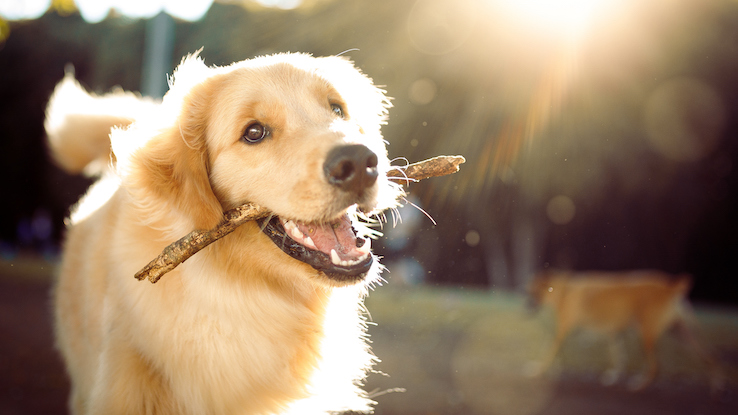
Big, small. Long hair, short hair. Great with kids, perfect for protection. Exercise companion or low maintenance. There are many characteristics that make a great dog breed, well, a great dog breed. In the end, it all depends on what type of canine companion you’re looking for.
Here are 30 amazing dog breeds, their best qualities and who these breeds would be perfect for to help simplify your search for a furry friend.
Bichon Frise
What’s small, white and fluffy? No, it’s not a cotton ball, though this dog kind of resembles one! We’re talking about the super cute, super cuddly Bichon Frise, whose name literally means “fluffy white dog” in French. Bichons are friendly, curious and fun loving and are the perfect family pet.
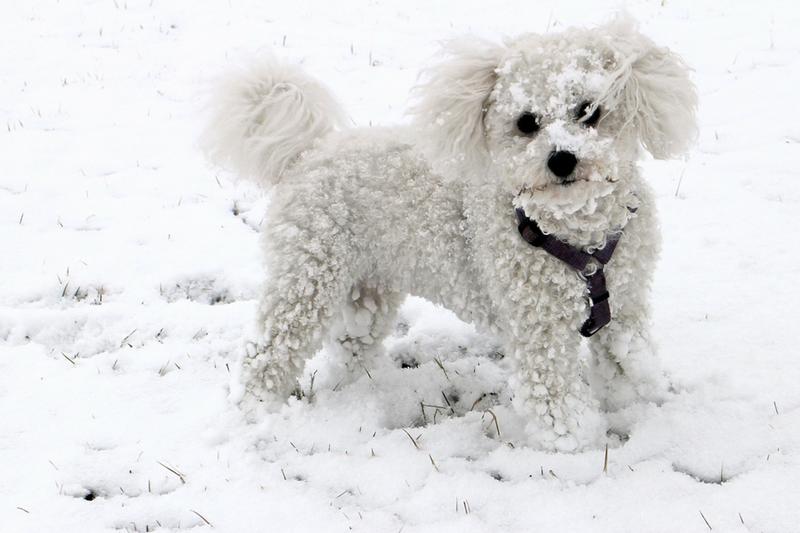
These dogs love to be cuddled and love to be the center of attention. In fact, Bichon Frises used to be owned by royalty and were kept to perform tricks and entertain. If you’re worried about their fur, you needn’t be. Their fur is hypoallergenic, making these dogs a great pet for someone with allergies. An additional bonus? Bichons are typically about a foot tall, so they are also good for people living in small homes or apartments.
Portuguese Water Dog
With the word “water” in their name, it makes sense that these dogs were bred to be around it. Portuguese water dogs were once used to help herd fish and retrieve any lost nets or tackle. Today, they are typically seen as great family pets. These dogs are smart and easy to train, and they’re loving and fun.

President Obama and his family owned not one, but two Portuguese water dogs while in the White House. After months of speculation and decisions on what type of dog the Obamas would get, they were gifted their first pooch, Bo. Bo has been featured in many articles and even on television. He has even been seen running through the White House with the former President, which is a good thing, as these medium-sized dogs require a lot of activity to keep them from getting bored and destructive.
Beagle
Beagles are known for being intelligent, funny and loyal, just like Charlie Brown’s dog, Snoopy, who was, in fact, a beagle. Due to their amazing sense of smell, beagles make great hunting dogs and use their incredible nose to help track down small game. Even if you’re not looking for a rabbit-tracking companion, beagles make great family pets.
Once bred to hunt in packs, these dogs still love to be with others. A smaller breed, beagles are usually even-tempered and great with kids. They don’t have many health problems, but they do tend to howl. Luckily, if you start early, beagles can be trained to quiet their voice.
German Shepherd
Probably most famous for being police dogs, German shepherds are medium- to large-sized working dogs. They are extremely intelligent and are easily trained, and they tend to be great at anything they are taught to do. Besides police dogs, German shepherds make great service dogs, herding dogs or military dogs.
But German shepherds aren’t just working dogs. They also make good family pets due to their calm, caring and alert nature. As a large dog with high energy levels, German shepherds need some space to run around and get some exercise.
Golden Retriever
Let’s go from an iconic working dog to an iconic family dog. Golden retrievers are large dogs, originally used to retrieve fallen game like birds or ducks. One look into a golden retriever’s soulful eyes and you can see that they are wise and caring dogs.
Golden retrievers are loyal and sweet and make excellent companions. They are not prone to being off-tempered and are mostly calm dogs. For families who are looking for a large dog, golden retrievers are an excellent choice. Plus, because of their history of retrieving things, golden retrievers are great dogs to play a game of fetch with.
Maltese
Small with long silky coats, Maltese dogs are an ancient breed. As the name implies, they are said to originate from Malta, an island in the Mediterranean. In ancient times, the Greeks built tombs for Maltese dogs. These dogs were also believed to be able to cure pain and illnesses.

Like that of the Bichon Frise, the Maltese coat is hypoallergenic and does not shed much. They also tend to have less health problems than other small dogs in the toy dog category. Because of their size and stature, Maltese dogs make great family pets, especially for people who live in smaller homes.
Corgi
Corgis are an excellent breed, known for their short, stubby legs, large standing ears and fluffy little behinds. According to Welsh mythology, Corgis serve as fairies’ mode of transportation. Today, corgis are also known for being the royal dog of England. In fact, Queen Elizabeth has owned more than 30 corgis in her lifetime.

As any corgi owner could tell you, it’s no wonder why the Queen loves the breed so much. They’re very personable, playful and loyal. However, corgis are prone to overeating and weight gain, so it’s important to monitor their food intake.
Labrador Retriever
Labrador retrievers make our list as one of the most popular breeds in the United States, Australia, New Zealand, Canada and the United Kingdom. Similar to golden retrievers, Labs are just as friendly, obedient and loving. But because they have shorter hair than golden retrievers, Labs don’t require as much grooming. They do, however, shed.
Many families choose labs due to their sweet temperament. Protective and faithful, Labs are great family dogs. They are also gentle and good for families who have small children. They also easily trained and make great therapy dogs and guide dogs.
Poodle
Because of the way these dogs are often groomed, poodles have earned themselves a reputation for being proud, sassy and perhaps a bit snobby. But these dogs are anything but that. They are easily trained and oh so smart. They also make great show dogs, as they love to perform.
But poodles can be just as fun loving as they can be showy, and they make great companions for children. They don’t shed or drool excessively, so if you’re willing to groom them, they make great household pets. Poodles also come in three different sizes—standard, miniature and toy— so you can easily pick the size that’s best for you.
Husky
Huskies are truly beautiful dogs. With their large stature, thick fur, well-liked features and stunning, light-colored eyes, Huskies are best known for their sled-pulling abilities. But this doesn’t mean they aren’t great pets, as Huskies can be affectionate and loyal.
Huskies have a thick double coat and do not shed much, except for twice a year when they lose their coat. Because of the Huskies’ large size and athletic nature, these dogs are best suited for someone who has the space, time and ability to allow them to engage in activities.
Bulldog
Let’s go from a high maintenance dog to a more laid-back breed. The bulldog is perhaps best known for its love of sleep and looking like the enforcer of the dog world. Its wide build, short legs, distinctive wrinkled face and pushed-in nose make this breed adorable in its own unique way.
Like all dogs, stocky bulldogs need regular walks but don’t really require a whole lot more. They are perfect for anyone who needs a low-maintenance companion, such as a busy family or an elderly person. Because of their short snout, bulldogs are prone to overheating and should be indoor dogs rather than outdoor dogs.
Pug
Pugs are small dogs best known for their large head, short nose and wrinkled face. Oh, and let’s not forget the protruding eyes and curled tail. Pugs all have a distinct, dark, mask-like mark that runs down the front of their face. They tend to be a bit more serious than other small dogs.

Pugs are loyal though and love to please their owners. They can be affectionate, as well. Like bulldogs, pugs don’t do well in heat and need to be watched in hot weather for signs of heat stroke. Additionally, their protruding eyes tend to dry out and need to be kept moist. Lastly, and perhaps most adorably, their short snout makes them prone to snoring.
Boxer
When you think of someone in the boxing ring, what comes to mind? Probably someone strong, powerful and quick. Well, the same can be said about the boxer breed. These medium-sized dogs have square-shaped muzzles with strong jaws. Once former fighters, these dogs are still popular today, but they have found their place as family pets.
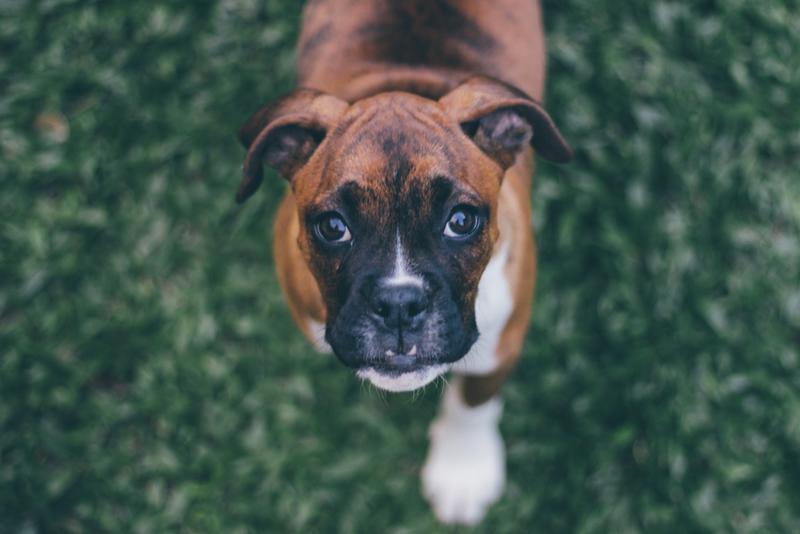
Though they can look serious and intimidating, Boxers are proactive and good with children. Boxers, though strong and active animals, can also be positive and playful. Their personalities make them great for families that like to spend a lot of time outdoors.
Irish Setter
With their shiny reddish coats and long, regal necks, Irish setters are showstoppers. And if you’ve ever seen this dog strut its stuff, you’d know that it’s aware of its charm. Irish setters make great show dogs, but they are also perfect family dogs. Bred as gun dogs who could easily be seen through the brush by hunters, Irish setters are very athletic by nature.
They make great pets for anyone who is extremely active. Irish setters like to run around, and because they were bred to retrieve game, they are now great ball fetchers. These dogs have higher metabolisms and may require more food than other breeds of similar size.
French Bulldog
Let’s move on to a less rambunctious breed. French bulldogs are small, low-maintenance dogs that are great for people who live in small spaces. These dogs were created as a crossbreed between English bulldogs and rattlers—dogs bred specifically for catching rats in the 1800s. Frenchies get their bat-like ears from the ratters, who were often terriers with large, erect ears.

The dogs became highly fashionable among high-society ladies and acted as old-school status symbols or purse dogs. Today, their cute looks, small size and happy demeanor make them great apartment dogs. They do like to run around, but luckily, they are small enough that they don’t require a lot of space.
Collie
This large herding dog has become a television icon. We’re talking about Lassie, the loyal and intelligent dog who went on many adventures with her lovable companion, Timmy. And Lassie’s characteristics reflect those of real-life collies. Well, they can’t communicate full sentences with a single bark, but collies are beautiful and definitely great family dogs.
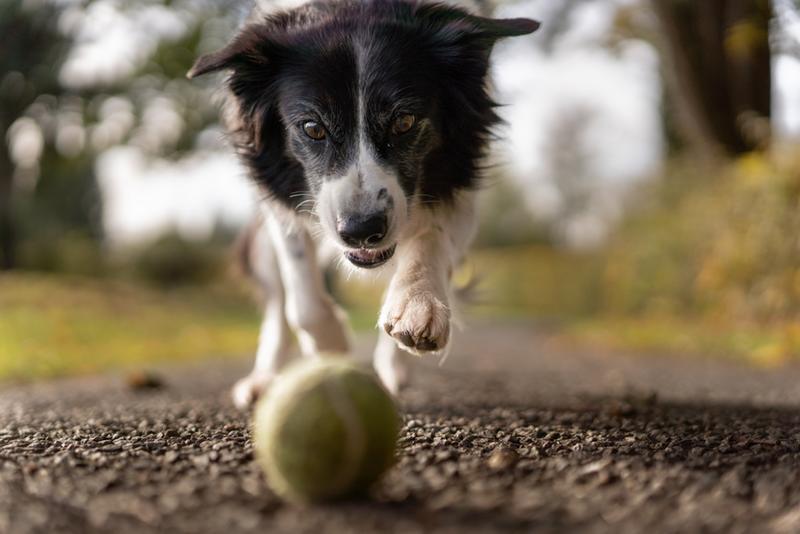
Like Lassie protected Timmy, collies are loyal to their owners. However, because they are herding dogs, they do require exercise and some space to run around. If you’re willing to get this dog outdoors often, a collie could be a good choice for you.
Great Dane
If large dogs are your thing, then take a look at the Great Dane, one of the tallest dog breeds out there. These giant-sized dogs, though intimidating in size, are actually quite gentle. Though they were bred to help hunt wild boars and as guard dogs, they are not aggressive animals.
These working dogs like to be part of a family and tend to seek attention. They are also playful without being too rambunctious. However, Great Danes do not have a long lifespan; most only live about six to eight years. They are also prone to stomach problems like bloating and gas buildup.
Dachshund
With short legs and an extra-long body, dachshunds are probably more commonly known as the “hot dog” dogs. These dogs were bred to hunt small prey and ground-dwelling animals like badgers and prairie dogs. Today, they are bred mostly as family dogs.
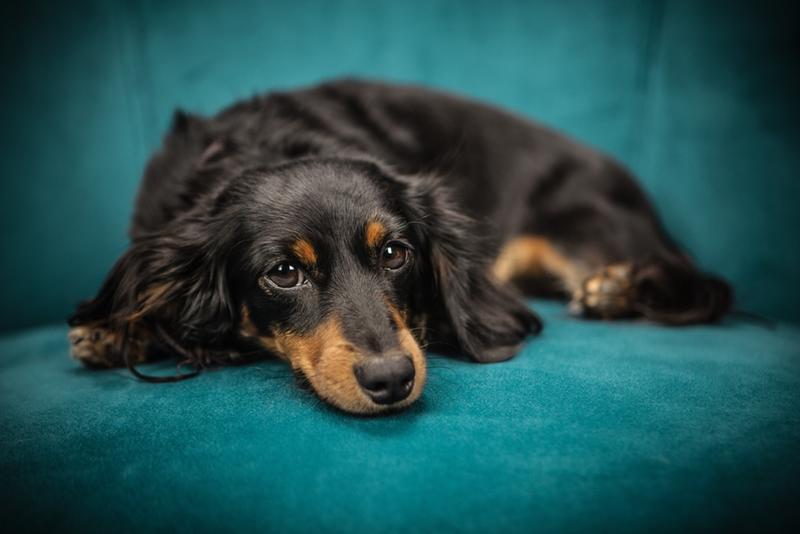
Dachshunds are good with children, are very energetic and love to play. Unfortunately, they also love to bark. But if you can put up with the barking, dachshunds make lovable companions. Be aware though, because of their long back, they are prone to back problems.
Jack Russell Terrier
Smooth-bodied with a short coat, Jack Russell terriers trace their origins to fox hunting. And they take their profession very seriously. Even with training, Jack Russell terriers hang on to their hunting instinct and often don’t do well with other animals.

However, these little dogs are energetic and fun for anyone who is looking for their one and only pet. They do have a tendency to bark and dig but aren’t high-maintenance pets. They are also often on alert and make great watchdogs.
Yorkshire Terrier
Yorkshire terriers, or Yorkies, are another small breed in the toy dog category. Developed in Yorkshire, England in the 19th century, Yorkies were bred to catch rats. Today, they live up to their toy classification. With long hair on the top their heads, Yorkies are often seen with their hair tied up, usually adorned with a little bow.

Yorkies are typically seven pounds or less, making them perfect purse dogs. And if you think Yorkies are just seen as fashion accessories, think again. The relationship goes both ways, and these dogs love the attention they get. They are feisty little dogs but can also be affectionate.
Cavalier King Charles Spaniel
Small with large, round eyes and long, floppy ears, it’s nearly impossible to not fall in love with the Cavalier King Charles spaniel. This breed has been a favorite of many celebrities, including Ronald Regan, Frank Sinatra and Diane Sawyer. The breed was also featured in the series Sex in the City as Charlotte York’s beloved pet, named Elizabeth Taylor.

The breed loves to be cuddled, perhaps more so than other dogs. Cavalier King Charles spaniels tend to require a lot of affection from their owners, not that the devoted owners of these dogs seem to mind! These dogs come in four distinct colors: chestnut and white, black and tan, black with white, and tan and ruby-colored.
Pomeranian
If you’re looking for a lap dog, a Pomeranian may be just what you’re looking for. These small toy dogs were once a bit bigger. In the 1800s, Queen Victoria of Germany owned many Poms and bred them until they were eventually smaller in size.

The modern-day Pomeranians are usually small, puff ball-like dogs, though some are smaller or larger than others. They are a bit yappy, but they don’t require a whole lot of maintenance. They are easy to live with but tend to be picky eaters. Their small size and low levels of neediness make them a good choice for busy apartment dwellers.
Labradoodle
Let’s talk about designer dogs. The Labradoodle is one of the more recent additions to the list of created dog breeds. Originating in 1989, Labradoodles were created as guide dogs for people with allergies. With the goal of taking a Labrador’s guide dog qualities and mixing it with a poodle’s hypoallergenic fur, the Labradoodle breed was born.
Since then, Labradoodles have become a breed of their own. These dogs are easy to train and love to run around. However, they do tend to have long coats that require some brushing and grooming, but they don’t shed much.
Shetland Sheepdog
Also known as the Sheltie, Shetland sheepdogs are often mistaken for small collies. While both descended from border collies and are in the herding family, they are two different breeds. Collies are much larger and have longer muzzles. Shelties are smaller, measuring about one foot tall.
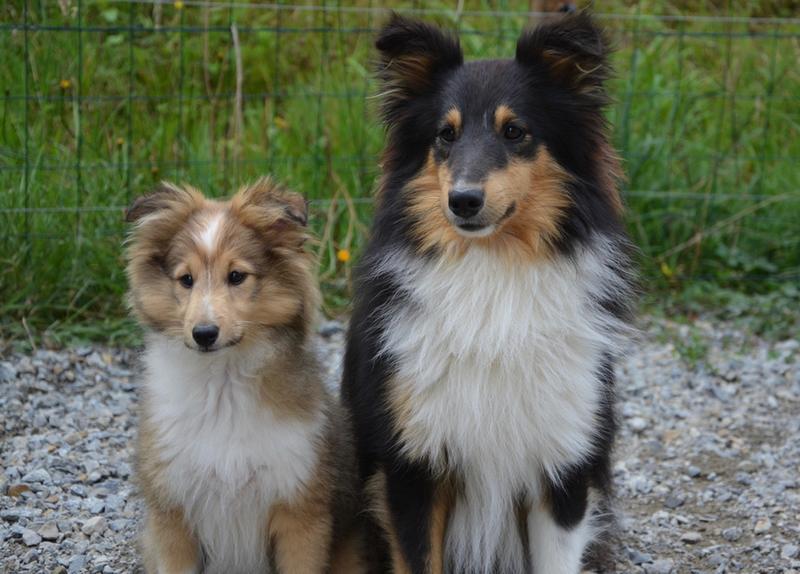
Shelties make good family dogs because they are usually playful and affectionate. They do tend to bark a lot but are not aggressive dogs. As you can imagine, their beautiful fur does need to be brushed, and they do shed. Shelties typically appear in three colors: sable, a mix of brownish hues and white; tricolor, a mix of black, brown and white; and blue merle, a mix of black and gray, with some white and tan.
Miniature Schnauzer
With its trademark bushy eyebrows and long mustache and beard, the miniature schnauzer looks unlike any other breed. First created in the 19th century, the miniature schnauzer is a cross between a standard schnauzer and a smaller dog like a Poodle.

They are working dogs by nature, and even today, miniature schnauzer clubs will hold “ratting” challenges for the dogs to go through to ensure that the breed maintains its hunting and working nature. These dogs are spunky and alert, and make good guard dogs.
Chihuahua
The smallest breed in the world, Chihuahuas are the ultimate purse dog. Weighing about two pounds, Chihuahuas rarely break the six pound mark. They have been portrayed as either Spanish-speaking dogs in the movies, or as a bit snobby and hailing from Beverly Hills.
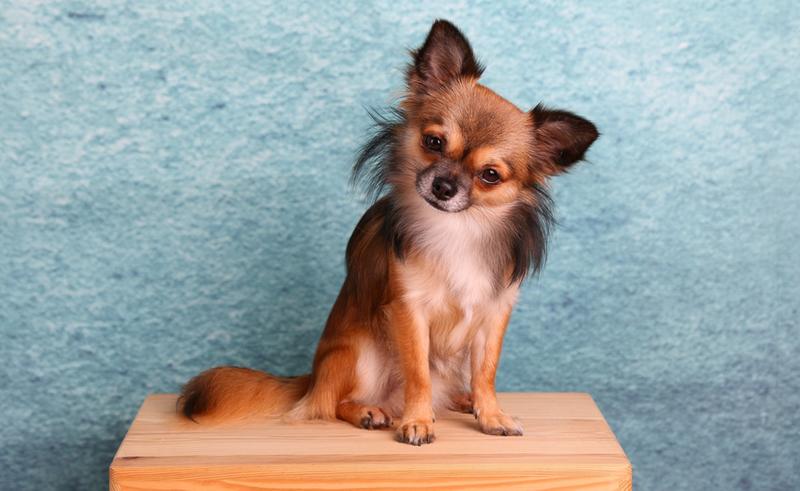
And perhaps they are a bit pampered; these dogs are happiest when they are cuddled in their owners’ arms. They are affectionate and make good family pets. They can be temperamental and do tend to snap at strangers, perhaps in an attempt to protect themselves due to their very small size.
Hungarian Vizsla
If a small and somewhat fragile lap dog isn’t to your liking, how about something larger and more active? The Vizsla is a hunting dog of medium size. It is a great dog for an active family. And we mean active. Vizslas don’t like to be cooped up and can become destructive if left indoors too long.

If you’re able to provide the activity level this breed needs, you won’t be disappointed with a Vizsla. They tend to get along with just about anyone. They can, however, be defensive and territorial, and may not take too well to a new addition to your family. Making sure your Vizsla isn’t neglected can help ease the transition for them.
American Eskimo Dog
A member of the spitz family, the American Eskimo dog originates from Germany, descending from the German spitz breed. This all-white beauty was originally bred to be a hunting and herding dog. It was not bred to be a sled dog like a Huskie, though it’s understandable where that misconception comes from with “Eskimo” in its name.

Fun fact, an American Eskimo dog was the first-known dog to walk on a tightrope in a circus. Today, these dogs are easily trainable and still perform tricks. They are social creatures and tend to act out if they don’t get the interaction and attention they need.





